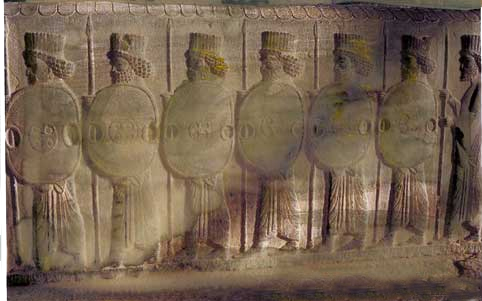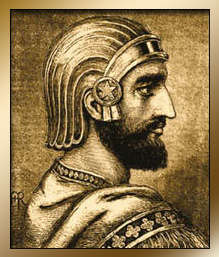
|
| Achaemenid Empire |
The founder of this dynasty was supposedly Achaemenes. It lasted from 559 BC- 330BC. Cyrus II(Kurush) the Great was
considered to be the first true king of the Achaemenid dynasty.Cyrus was politically shrewd, modeling himself as the "savior"
of conquered nations. To reinforce this image, he instituted policies of religious freedom, and abolished slavery in the newly
acquired cities. This caused a great deal of cultural diffusion, blending many of the disparate clans together, and thus reducing
previous tribal and territorial loyalties. As a result, the Achaemenid era was known as a relatively peaceful period in Middle
Eastern history.

|
| Cyrus the Great |
His immediate successors were less successful. Cyrus' son Cambyses II conquered Egypt, but died in July 522 BC as the result
of either accident or suicide, during a revolt led by a sacerdotal clan that had lost its power following Cyrus' conquest
of Media. According to the Behistun Inscription, pseudo-Smerdis ruled for seven months before being overthrown in 522 BC by
a member of a lateral branch of the Achaemenid family, Darius I the Great.The Achaemenids thereafter consolidated areas firmly
under their control. It was Cyrus the Great and Darius the Great who, by sound and farsighted administrative planning, brilliant
military maneuvering, and a humanistic world view, established the greatness of the Achaemenids and in less than thirty years
raised them from an obscure tribe to a world power. It was during the reign of Darius I that Persepolis was built (518 - 516
BC) and which would serve as capital for several generations of Achaemenid kings.
 |